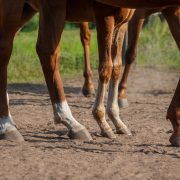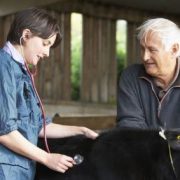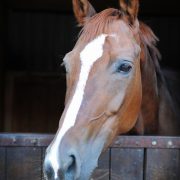Equine cheek tooth extraction: comparison of outcomes for five extraction methods
Equine cheek tooth extraction: comparison of outcomes for five extraction methods

Requires membership/payment
This article can be accessed via RCVS Knowledge Library Membership (click here).
In our edition of: Oct 2019
In our categories of: equine
our summary:
Caramello, V. et al. (2019) Equine cheek tooth extraction: Comparison of outcomes for five extraction methods. Equine Veterinary Journal, [early view]
The aim of this retrospective study was to compare five equine cheek tooth extraction methods for type and incidence of complications.
Medical records from a single large animal hospital in the United States were examined for horses that had at least one cheek tooth extraction between 1997 and 2013. The horses were divided into five groups based on extraction method: oral extraction; repulsion of maxillary cheek tooth into the oral cavity by trephination, or by maxillary sinus bone flap; repulsion of mandibular cheek tooth by trephination using a ventral mandibular approach, or lateral buccotomy. Other data collected included: age, breed, gender, body weight, the type and method of anaesthesia and analgesia, type of alveolar packing following extraction, and duration of hospitalisation.
Follow-up data from the hospital records and from the primary-care veterinarian were analysed for post-operative complications. These were categorised as none; injury to adjacent tooth; damage to the alveolar bone; ‘non-healing’ alveolus; fistula formation; post-operative sinusitis; surgical site infection; neuropraxia; pyrexia; and pneumonia. Recovery time was categorised as <2 weeks, 2-4 weeks, 1-2 months or >2 months.
One hundred and thirty-seven horses were included in the study, with 162 extractions categorised as follows: oral extraction (68); lateral buccotomy (16); tooth repulsion into the oral cavity by maxillary sinus bone flap (26); maxillary trephination (21); and mandibular trephination (31).
Analysis of the data revealed oral extraction occurred more frequently in older horses of >10 years, with the repulsion techniques more likely to be used in younger horses. Oral extraction was successful in 71% of patients and had the lowest rate of complications (20%). Repulsion by maxillary sinus bone flap had the highest incidence of complications (80%). Complication rates for the other methods were 42% for repulsion by maxillary trephination, 54% for mandibular trephination and 53% for lateral buccotomy. Repulsion by sinus bone flap significantly increased the risk of: damage to adjacent teeth; post‐operative sinusitis; damage to alveolar bone; delayed alveolar granulation; and fistula formation. Repulsion by maxillary trephination significantly increased the risk of surgical site infection. Extraction by lateral buccotomy significantly increased the odds of facial nerve neuropraxia. Post-operative pyrexia was significantly associated with all repulsion methods.
Limitations acknowledged by the authors included the small number of horses in the various treatment groups, the retrospective nature of the study and the large number of surgeons involved, with diverse experience and different extraction method preferences.
The findings of this study add support to the view that oral extraction in standing horses is the preferred method of equine cheek tooth extraction wherever possible, as it associated with fewer post-operative complications than other methods.
Image copyright attribute: Anja Seibert
Join the discussion
We encourage discussion on all material highlighted in each edition of inFOCUS. Use the button below to join the conversation on Twitter and include your comment in the feed for this issue.






Leave a Reply
Want to join the discussion?Feel free to contribute!